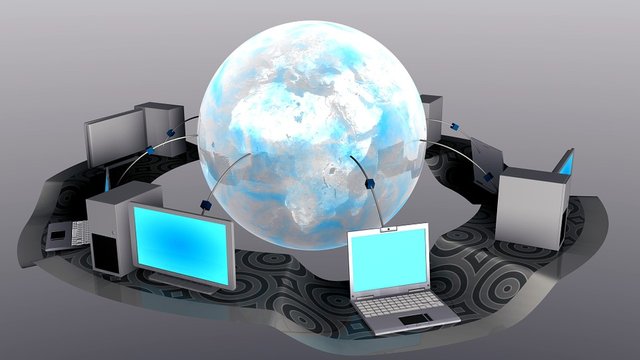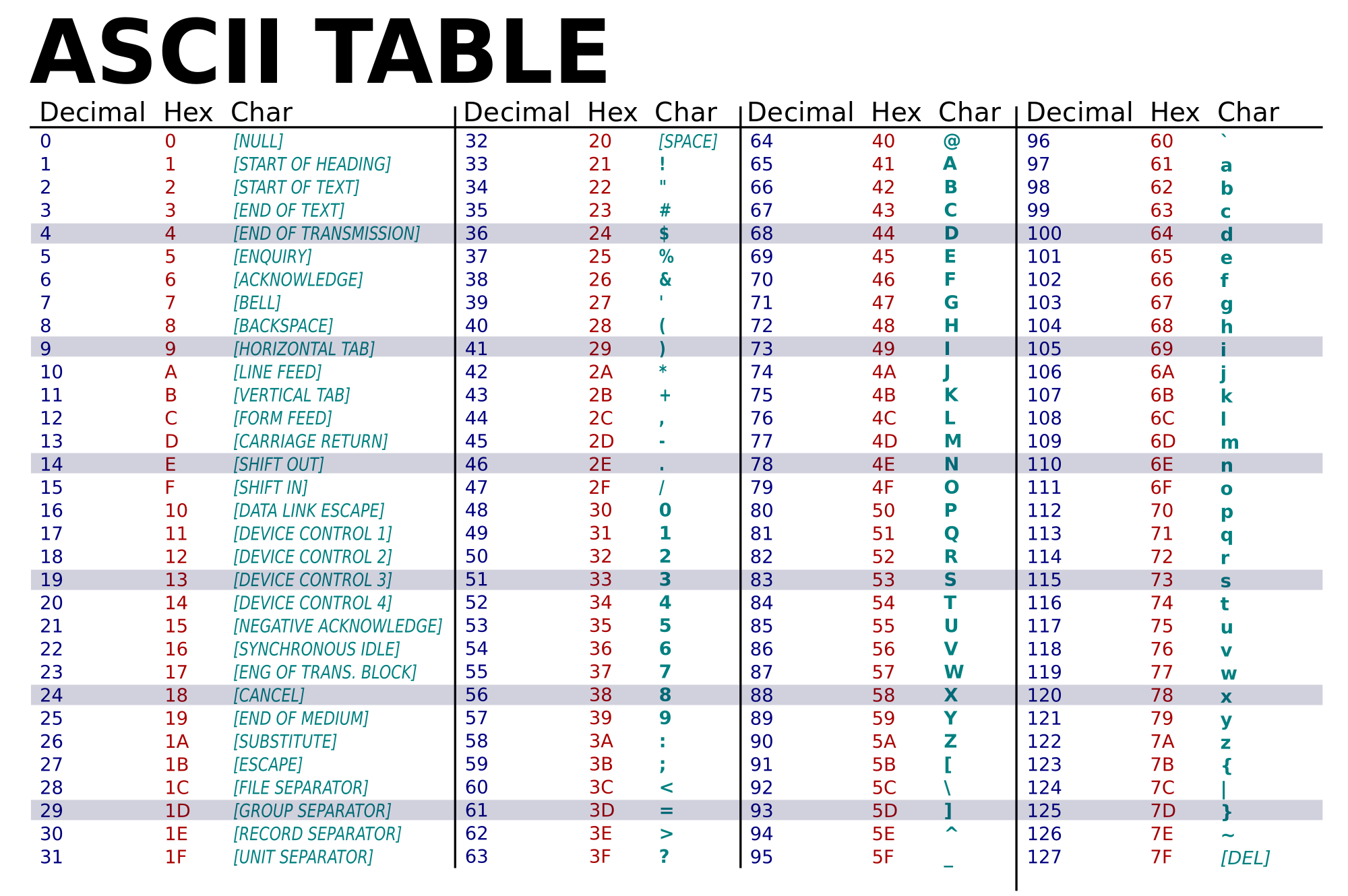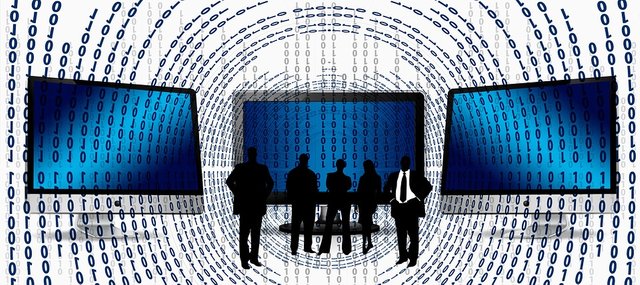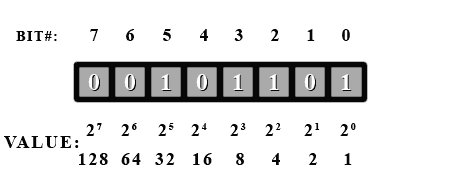As Human beings communicate with each other, either through body-to-body, speech, eye-contact, sign language and touch, Human Body System which I discussed in my previous post also communicate within themselves via nervous system and endocrine system, the same also goes to the data.
Data communicate with one another using different transmission medium, such as wireless communication channels, copper wires, storage media, optical fibers and computer buses. and so on. Having taken my time to do my research well and then typed this article inside a corner in my room and you are here reading it now, even without too much understanding of how the communication take place, it is suffice to strongly believe that data do communicate with one and other. To have a clear understanding of how data communication takes place, I will start with a Basics of Data Communications Concepts

Image1 from: pixabay
What is Data?
In computing field, data can be referred to as information that has undergone a transformation into a form that is sufficient enough for movement or processing to take place. In today’s current technology, data is information converted into binary digital form.
The basic concept of data according to computing field can be traced back to the work of great American mathematician, popularly known as the father of Information Theory Claude Shannon, who ushered into binary digital concepts based on applying two (2) value Boolean logic to electronic circuit. No doubt, binary digit formats serves the underlying construction of Central Processing Units (CPUs), memory, semi-conductor, disk drive and other computing device commonly used today.
How does a computer convert data into binary digit?
Data can be either in form of Text, Image, Audio and Video, for instance, let us convert this great text ‘stem’ into binary, before we go further, we must know that every text has a recognized equivalent number in ASCII (America Standard Code for Information Interchange). Once the ASCII value is known, that value can be converted into its binary equivalent. In the example below we take the text "stem" and convert it to binary, which is what computer understands.

Image2 from: flickr
In the ACSII table above, s = 115 in decimal (base 10), t = 116 in decimal (base 10), e = 101 in decimal (base 10) and m = 109 in decimal (base 10). The next is to convert each of this decimal equivalent to binary
Converting s = 115 to binary, we must follow this
2 | 115
2 |57 r1
2 | 28 r1
2 |14 r0
2 |7 r0
2 |3 r1
2 |1 r1
2 |0 r1
2 |0 r0
writing it from the bottom to up, we have s = 01110011 binary (base 2).
doing the same for t = 116, we follow the same suit
2 | 116
2 |58 r0
2 | 29 r0
2 |14 r1
2 |7 r0
2 |3 r1
2 |1 r1
2 |0 r1
2 |0 r0
writing it from the bottom to up, we have t = 01110100 binary (base 2).
doing the same for e = 101, we follow the same suit
2 | 101
2 |50 r1
2 |25 r0
2 |12 r1
2 |6 r0
2 |3 r0
2 |1 r1
2 |0 r1
2 |0 r0
writing it from the bottom to up, we have e = 01100101 binary (base 2).
doing the same for m = 109, we follow the same suit
2 | 109
2 |54 r1
2 |27 r0
2 |13 r1
2 |6 r1
2 |3 r0
2 |1 r1
2 |0 r1
2 |0 r0
writing it from the bottom to up, we have m = 01101101 binary (base 2).
s t e m = 01110011 | 01110100|01100101|01101101
stem = 01110011 01110100 01100101 01101101
so equivalent of stem in binarry = 01110011011101000110010101101101
Basics of Data Communications Concepts

Image3 from: pixabay
Data communication is usually defined as the exchange of digital information between two devices using an electronic transmission system. Digital information is another name for ones and zeroes. Therefore a less formal definition of data communication is the art of sending ones and zeroes from one point to another as previously discussed. To help illustrate basic data communication concepts, we begin by examining two devices that often need to communicate: host computers and terminals.
HOST COMPUTER
A host computer, or central processing unit (CPU) is usually at the heart of any data communication network. The host computer can perform a numerical calculations, store and retrieve data, and perform a variety of tasks known as applications. Examples of a host computer applications software include: word-processing programs, spread-sheets, accounting programs and payroll programs. There are many different types of host computers, micro computers or personal computers usually serve only one user. Mainframes are host computers usually serving large company. Mini computers are host computers usually dedicated to a smaller set of users, like a department or a division.
Many data communication network allow host computer to exchange information with other locally or remotely located devices. One of these devices is known as a terminal. Other names for a terminal include cathode ray tube (CRT), video display terminal(VDT) and display station. Regardless of the name used, a terminal’s base function is to allow a user to communicate with a host computer. Terminals include a keyboard for entering information to be transmitted to the host computer and a screen for displaying information received from the host computer. While some modern computer networks do not even contain terminals today, the simple connection between a terminal and a host computer serves as an ideal starting point for any discussion of basic data communication concepts. More advanced networks build on these concepts.
TERMINALS
Terminals are often classified in one of three ways:dump, smart or intelligent. A dump terminal simply receives data from a host computer and displays it on its screen and it is usable to modify or change the data it receives. Similarly, any data typed into the keyboard is sent directly to the host computer, without any major modifications by the terminal.
A smart terminal usually sends extra information to a host computer, in addition to what the user types. This additional information can include the terminal’s address or location, as well as special information to prevent errors from occurring. The host computer also sends similar information to the smart terminal, including specific instructions regarding when the terminal can send data. The smart terminal is smart enough to interpret these instruction and pass on any actual data to the user.
The difference between an intelligenyt terminal and a smart terminal is very suble. Intelligent terminals are just like smart terminals, but their behavior can be modified or programmed. After a smart terminal leaves the factory, it is never changes its behavior and can never learn to perform new function. An intelligent terminal can be programmed to perform new functions by many means, includinging special tapes, cartridge, diskette or keyboard commands, depenfpn on the manufacturer.
BITS AND BYTES

Almost all computers and terminals from the 300-dollar terminal to the multi-million dollar computer, communicate by sending a series of ones and zeroes to each other, we call each one or zero a bit and a group of several (usually eight) ones and zeroes called a byte. Terminals and computer use the binary number system to represent digital information
CHARACTER CODES
Each time a user strikes a particular key on the dumb terminal, the terminal must translate it into a series of bits as reperesenting the same character. There are many ways to represent characters and these different representations are known as character codes.
There are several different character codes in use today, the porpular ones in order of their evolution are: Morse, Baudot, EBCDIC and ASCII (AMERICAL NATIONAL STANDARD CODE FOR INFORMATION INTERCHANGE)
Summary
Data communication is the exchange of digital information, or ones and zeroes between two devices. Host computers and terminals usually communicate using groups of eight bits or bytes. Character codes are different methods used by devices to represent information. The two most common character codes are ASCII and EBCDIC, use ones and zeroes to represent characters.
Thanks for reading through and do have a nice weekend.
References
1. Behrouz A. Forouzan and Sophia C. Fegan (2007). Data Communications and Networking. McGraw-Hill Forouzan Networking Series.
2. BASICS OF DATA COMMUNICATION AND COMPUTER NETWORKING By: Kaushalya
3. DATA COMMUNICATION AND COMPUTER NETWORKS
4. Data Communication & Network Standards By: F.Y.B.Sc. (IT) (Semester II)
5. William Stallings (2007).DATA AND COMPUTER COMMUNICATIONS. Pearson Education, Inc. Pearson Prentice Hall Pearson Education, Inc.Upper Saddle River, NJ 07458
Image Credits
1. Image 1 from: pixabay
2.Image 2 from: flickr
3. Image3 from:pixabay
4. Image4 from:wikimedia commons
*All images are from free sources website

Being A SteemStem Member
Downvoting a post can decrease pending rewards and make it less visible. Common reasons:
Submit
Can't wait til VR communication and remote tourism problems are solved.
Downvoting a post can decrease pending rewards and make it less visible. Common reasons:
Submit
I think Facebook is already tapping into the world of Virtual Reality (VR). Both Facebook and Oculus Rift have announced the launch of Spaces (an application that allows users communicate in virtual reality).
Downvoting a post can decrease pending rewards and make it less visible. Common reasons:
Submit
Pretty informative article, especially for beginners. Keep that nice work up
Downvoting a post can decrease pending rewards and make it less visible. Common reasons:
Submit
Thanks for the nice comment @numbo
Downvoting a post can decrease pending rewards and make it less visible. Common reasons:
Submit